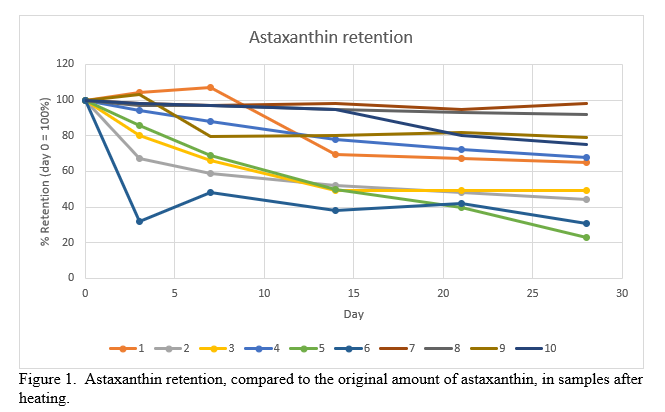USE OF MICROALGAE AS AN ASTAXANTHIN SOURCE IN ATLANTIC SALMON Salmo salar FEED
Cultured salmon (Salmo salar) is an important carnivorous fish with an estimated2.5 million metric tons in 2018. The pink to red color of the fillet is one of the most important quality criteria for salmon. This pigmentation is due to deposition of carotenoids (mainly astaxanthin) in the muscle of salmon, and to a lesser degree canthaxanthin, in farmed salmon. Since salmon is unable to synthesize astaxanthin, the carotenoids originate from micro-algae in the wild, or are synthetically produced for inclusion in the diets of cultured fish.
Two 30-day stability tests were conducted with microalgae (Haematococcus pluviatilis) containing high levels of astaxanthin. Microalgae was dried or encapsulated in 1, 2, or 3% sodium alginate at a concentration of 1, 2 or 3%. The samples were then either kept in the dark in a cool room where feed is normally stored or heated for 5 min at 150ºC and then stored as described. The encapsulated samples that contained the highest levels of microalgae and lowest levels of alginate had the greatest astaxanthin degradation (samples 6, 8, and 9) compared to the lowest levels of microalgae and highest levels of alginate (samples 1, 2, and 4) and the dried algae alone (sample 10). An in vivo and in vitro study will be conducted to determine if Atlantic salmon can access the astaxanthin from the encapsulated algae.
